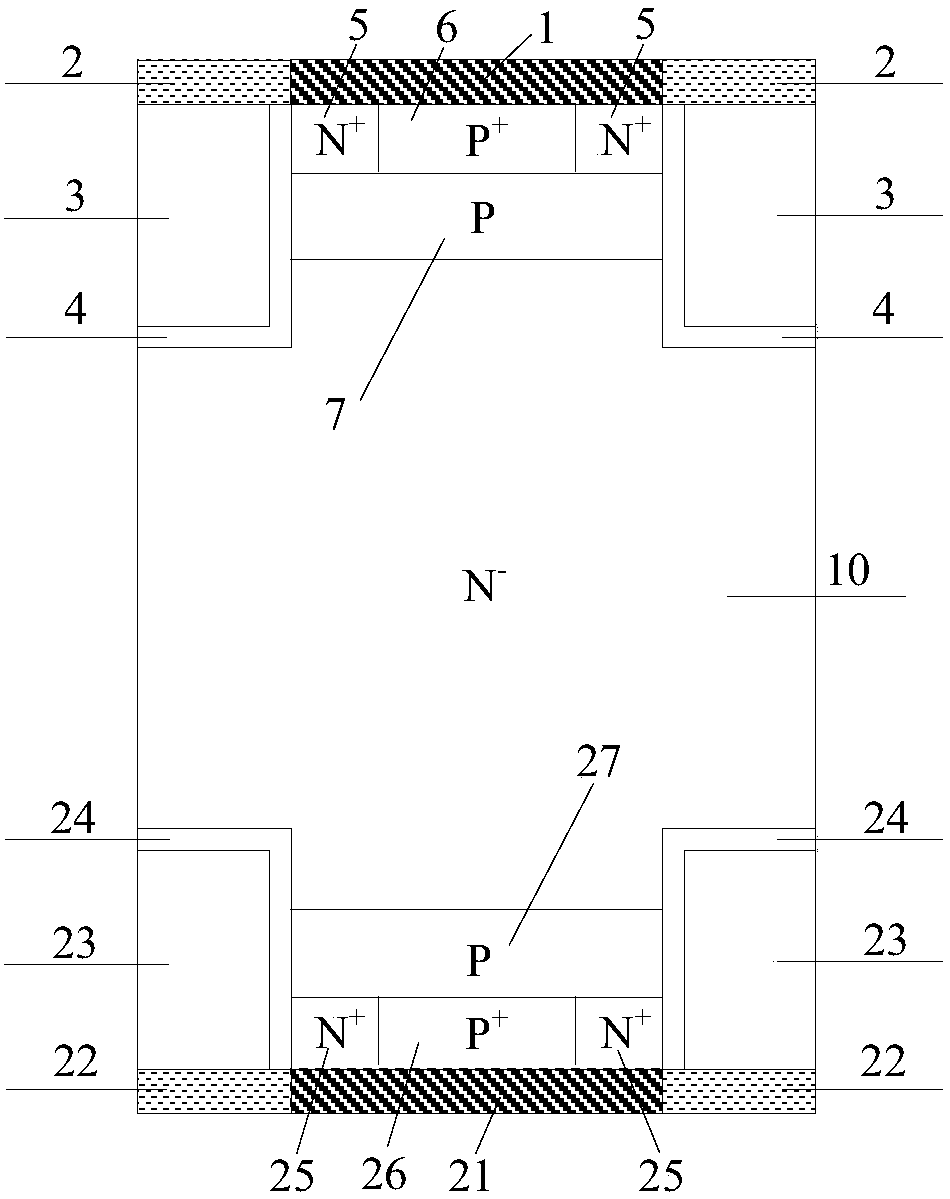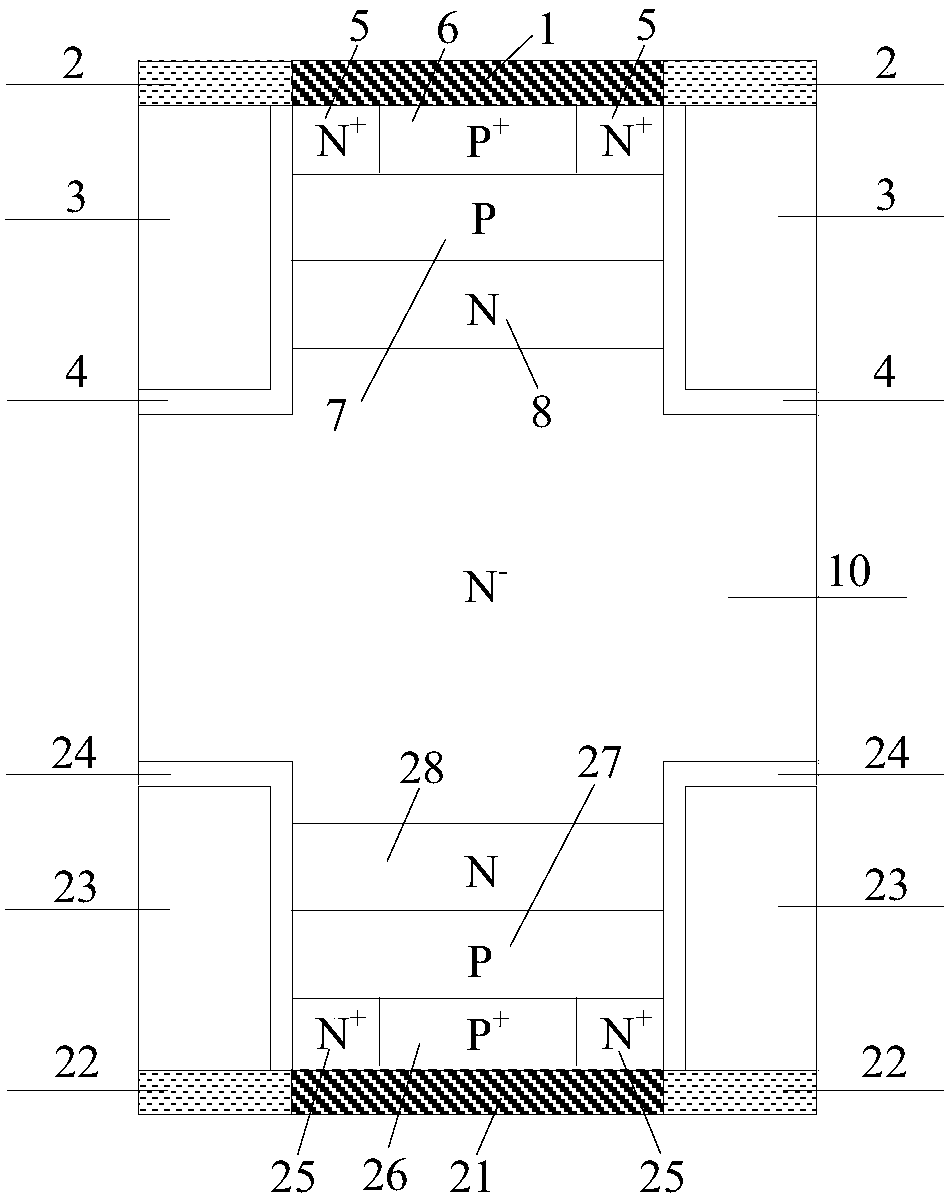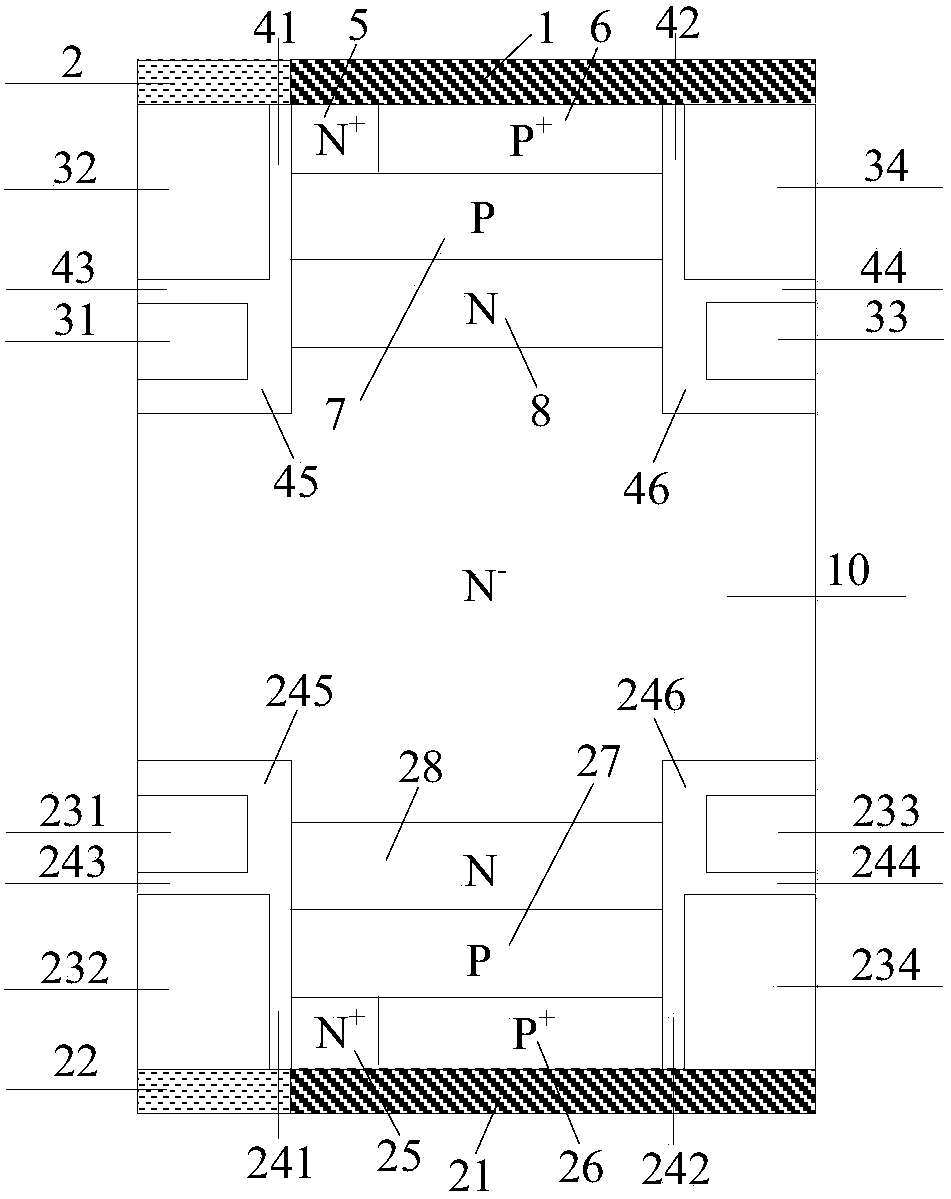A kind of bidirectional igbt device and manufacturing method thereof
A device and N-type technology, applied in the field of insulated gate bipolar transistors and bidirectional trench gate insulated gate bipolar transistors, can solve the problem of reducing device switching speed, poor device reliability, and affecting device conduction voltage drop. Medium characteristics and other issues
- Summary
- Abstract
- Description
- Claims
- Application Information
AI Technical Summary
Problems solved by technology
Method used
Image
Examples
Embodiment 1
[0041] A bidirectional IGBT device with a cell structure such as image 3As shown, it includes a MOS structure symmetrically arranged on the front and back sides of the N-type drift region 10; the front MOS structure includes a front metal electrode 1, a front dielectric layer 2, and a front N+ emitter region 5 located in the middle of the upper surface of the N-type drift region 10. , a front P+ emitter region 6, a front P-type base region 7, a front N-type layer 8, and a front trench gate structure located on both sides of the upper surface of the N-type drift region 10; the front P-type base region 7 is located in the front N-type layer 8. On the upper surface, the front N+ emitter region 5 and the front P+ emitter region 6 are located side by side on the upper surface of the front P-type base region 7; the upper surfaces of the front N+ emitter region 5 and the front P+ emitter region 6 are connected to the front emitter metal 1; The front N+ emitter region 5, the front P+...
Embodiment 2
[0046] A bidirectional IGBT device in this example, its cell structure is as follows Figure 4 As shown, on the basis of Example 1, the width of the front first bottom electrode 31 is greater than the sum of the widths of the front gate electrode 32 and the front gate dielectric layer 41, and the width of the front second bottom electrode 33 is greater than the width of the front third bottom electrode. The sum of the widths of the electrode 34 and the front second dielectric layer 42 makes the front trench gate structure an inverted "T" shape, that is, the width of the lower structure of the front composite trench structure is greater than that of the upper structure and extends into an N-type In layer 8 ; the backside MOS structure is connected and arranged mirror-symmetrically with the frontside MOS structure along the center line of the N-type drift region 10 . The width of the composite trench structure substructure extending into the N-type layer 8 / 28 is about 1 / 4-3 / 4 of...
Embodiment 3
[0048] A bidirectional IGBT device in this example, its cell structure is as follows Figure 5 As shown, on the basis of Example 2, there is also a layer of N+ layer 9 / 29 in the partial area between the lower layer structure of the front / back composite trench structure and the p-type base region 7 / 27, and the N+ layer The concentration of 9 / 29 is greater than the concentration of N-type layer 8 / 28 and its sidewall is connected to the composite trench structure; one side of the N+ layer 9 / 29 is connected to the front N-type layer 8 / 28, and the N+ layer 9 / 29 The other side and bottom of the N+ layer are connected to the trench gate structure, and the upper surface of the N+ layer 9 / 29 is connected to the lower surface of the P-type base region 7 / 27; the width of the formed N+ layer 9 / 29 is smaller than that extended into the N-type The width of the underlying structure of the composite trench structure in layer 8 / 28. The formed N+ layer 9 / 29 further reduces the resistance of th...
PUM
 Login to View More
Login to View More Abstract
Description
Claims
Application Information
 Login to View More
Login to View More - R&D
- Intellectual Property
- Life Sciences
- Materials
- Tech Scout
- Unparalleled Data Quality
- Higher Quality Content
- 60% Fewer Hallucinations
Browse by: Latest US Patents, China's latest patents, Technical Efficacy Thesaurus, Application Domain, Technology Topic, Popular Technical Reports.
© 2025 PatSnap. All rights reserved.Legal|Privacy policy|Modern Slavery Act Transparency Statement|Sitemap|About US| Contact US: help@patsnap.com



